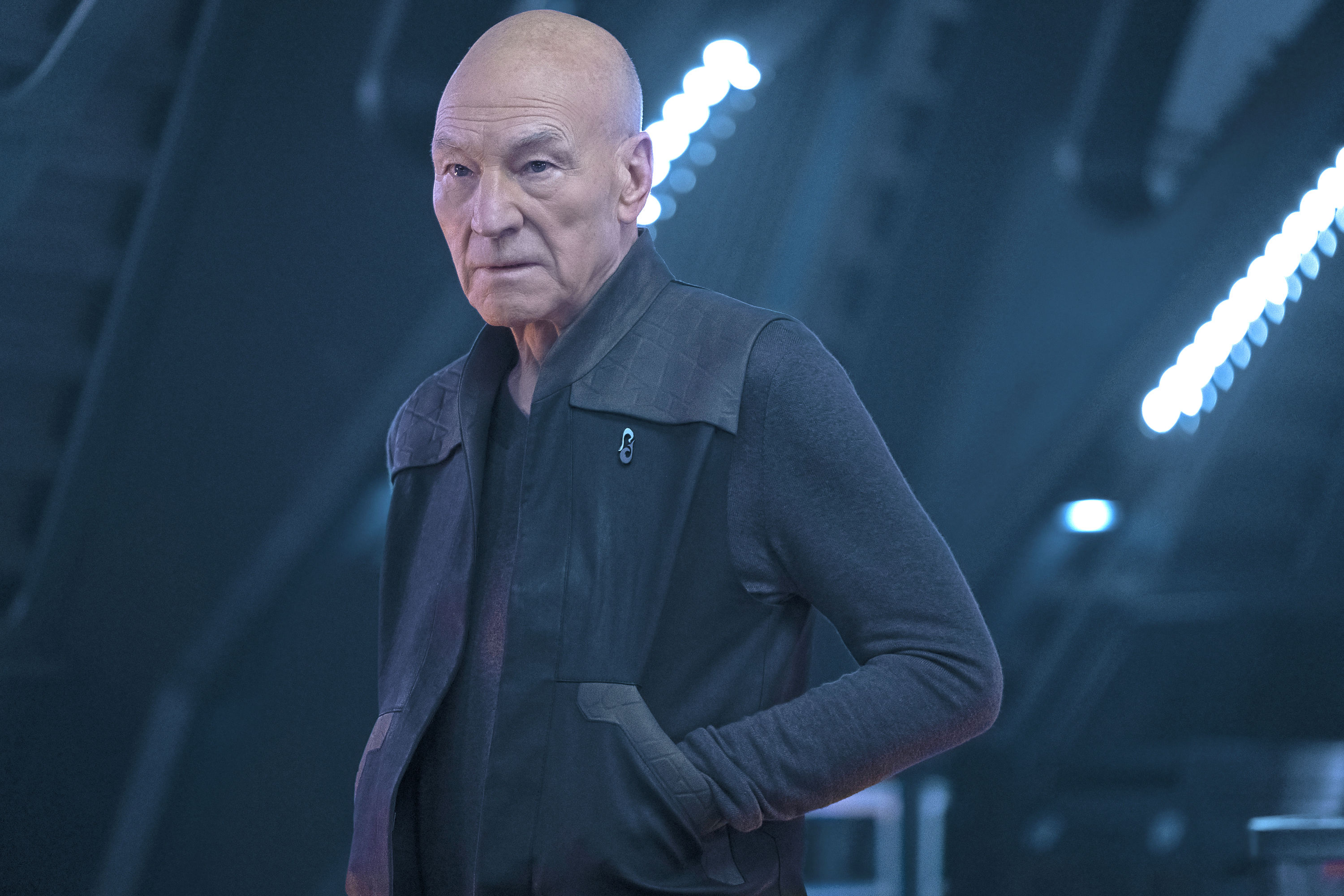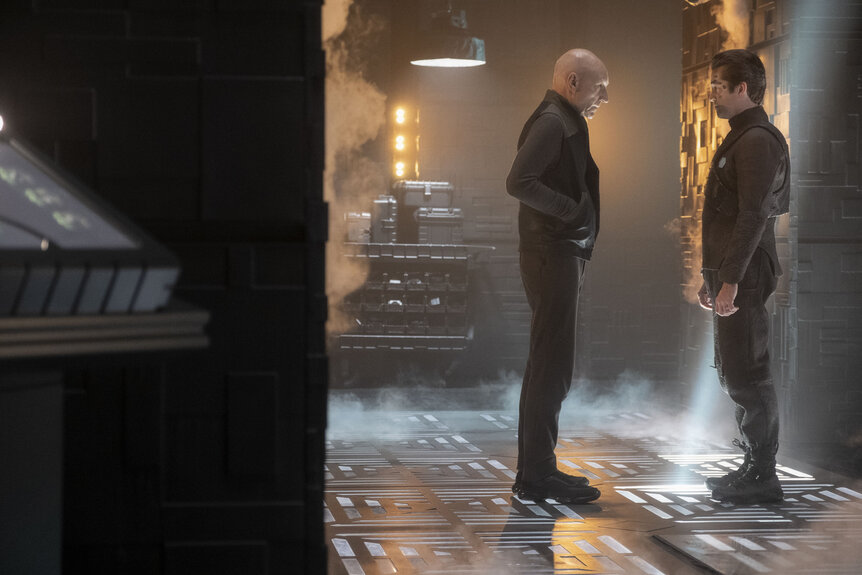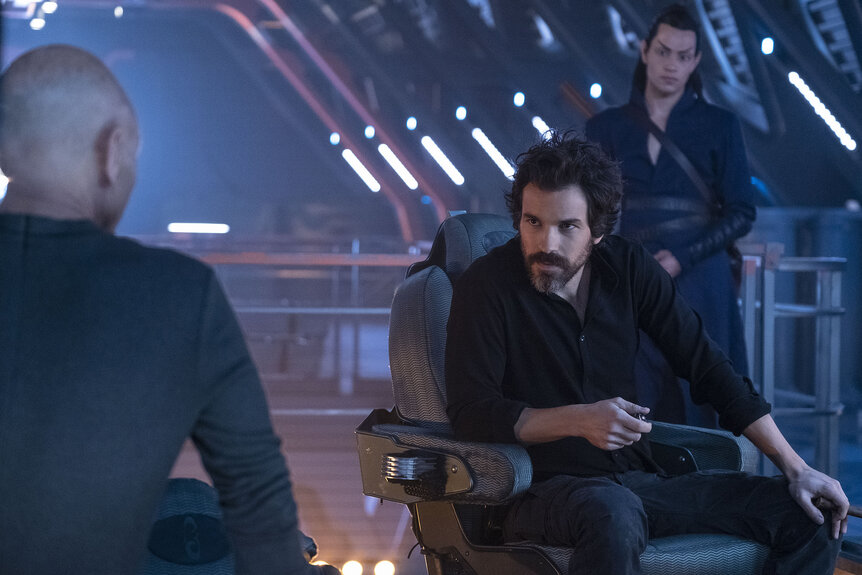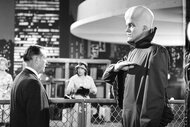Create a free profile to get unlimited access to exclusive videos, sweepstakes, and more!
Jean-Luc confronts his Borg nightmares in the most pivotal Star Trek: Picard episode yet

It's hard to believe, but it's been 30 years IRL since Jean-Luc Picard was captured by the Borg in Star Trek: The Next Generation's "The Best of Both Worlds."And for the titular character of Star Trek: Picard, returning to a Borg cube is not something he's looking forward to.
As he puts it in the opening moments of the latest episode, "My last trip to a Borg cube was not voluntary." Although Jean-Luc worked through his Borg-ish trauma in numerous episodes of The Next Generation, one episode of Star Trek: Deep Space Nine, and the film Star Trek: First Contact, he's never had to set foot on a Borg space ship again. Until now.
In Episode 6 of Star Trek: Picard — "The Impossible Box" — Jean-Luc has to face his oldest nightmares in a very literal way. And in doing so, the series presents a turning point not only for the rest of Season 1 of Picard but also creates a pivotal moment for Jean-Luc that will change him perhaps more than any episode of The Next Generation ever could.
**Spoilers ahead for Star Trek: Picard, Season 1, Episode 6, "The Impossible Box."**
Though "The Impossible Box" begins inside one of Soji's faux-childhood dreams, the focus of the story is overwhelmingly on whether or not Picard can get over his hardcore fear and prejudices about the Borg. Early on, when Dr. Jurati creepily reminds us that the Borg converted him into "Locutus of Borg," Jean-Luc does not respond well to the memory, nor is he down with the idea that reclaimed Borg can "change." In a speech that echoes his famous Ahab-esque "The line must be drawn here!" from First Contact, Picard rants at Jurati, saying "Change! The Borg?"
For some fans, Picard's hostile attitude about the Borg might scan as a slight retcon. After all, Jean-Luc got over his needs for revenge against the Borg in First Contact, right? And of course, he accepts that Seven of Nine and Hugh, like him, were able to reclaim their humanity. (At least partially.)
So, canonically, does this scene mean Picard has reverted to being an anti-Borg bigot? Well, not really. If anything, Picard's entire attitude in this episode is suggestive of something more than just his feelings about the Borg in the abstract. This is all about Jean-Luc's sense of comfort and his current emotional free-fall of powerlessness.
When the Le Sirena rolls up on the Borg cube and Jean-Luc realizes he's going to have to beam down alone, things go from ominous to traumatic at warp speed. This isn't like the old days. Even when Picard grappled with his bigotry toward Hugh in the episode "I, Borg," he did so from the comfort of the USS Enterprise. Sure, Picard has the cozy holographic recreation of his Chateau on the Le Sirena, but that's a far cry from the real safety of both versions of the Enterprise he commanded. Even at his most unstable in First Contact, Picard had a lot of power.
That's not the case here, which is why his outburst to Jurati makes sense, and also why his total freak-out later on the Borg Cube is so realistic. Not only is Jean-Luc reliving the trauma of having his body and mind taken away from him, but he's also doing it alone. The archival footage from First Contact (including the Borg Queen!) reminds us how scary this is, and for a moment, it seems like various Borg hands are all over Jean-Luc.
But the next moment is a catharsis. The people grabbing Picard aren't drones trying to assimilate him into a hive mind. They are, as Hugh says, trying to prevent him from falling into a precipice. When Picard sees Hugh, the emotional release is basically the center of the episode; "I'll take a friendly face!" Jean-Luc seems to emote and then goes in for a hug we would have never seen in TNG. Picard hugging Hugh on the Borg Cube represents exactly how much has changed for this character. He's not the stoic captain of old, cooly in control of his emotions. In fact, emotionally, Picard is a lot sloppier these days, and a little more real than he ever was on TNG.
This is why the hug with Hugh is so important, and also why it retroactively explains Picard's dismissal of Jurati's suggestion that the Borg could change. Jean-Luc never really got over everything that happened in "The Best of Both Worlds," but the comfort of the Enterprise and his position as the Captain helped him suppress that trauma. When Hugh takes him on a tour of what's going on with all the XB's (former Borg) on the cube, that's when Picard actually begins to change.
He's got no Enterprise to hide behind. It's just him versus his memories.
"You've shown the Borg for what they are," he says. "They're victims... not monsters." As some of the most famous space zombies in all of science fiction, this has been fairly obvious for audiences for several years, but if you were actually the victim of one of those space zombies, it would be much harder to accept that dichotomy.
In TNG, the series allowed us to see there were lingering effects of Picard's trauma, but it wasn't something that was being addressed every week, in every episode. This series is different. In this version of Star Trek, we're actually seeing something that seldom happens to big science fiction characters: actual, personal change. Back in the day, Spock's brother Sybok tried to metaphorically free people of their pain in Star Trek V: The Final Frontier. In this episode of Picard, that noble (but cheesily rendered) goal is actually accomplished with a degree of subtly. Picard's visit to the Artifact is one of reclaiming himself, and the rub is, we didn't even realize how much he needed this until now.
Once Jean-Luc gets his emotions together and finds a little peace with Hugh and the XB's, the action ticks-up to warp 9. Narek figures out that he can mine Soji's dreams for the location where she was constructed, and after he gets the information, tearfully tries to kill her. (Is he actually sad?)
Like her twin android sister, Dahj, Soji "activates," and tries to escape the Borg Cube. Luckily, Hugh and Picard meet up with her just in time, and with some last-minute help from the sword-swinging Romulan badass Elnor, everybody is poised to get out of danger. But how?
Well! Hugh has a "spatial projector" on the ship, which will allow Soji and Jean-Luc to beam long-distance to pretty much anywhere they want without a starship. This tech was last mentioned in the Voyager episode, "Prime Factors." So don't call this a deus ex Machina — maybe better to call it a deus ex Voyager?
Once again, in the canon of Trek, emotional journeys can take 30 years, but 40 thousand light-years can be traversed in a matter of seconds.
In the end, as Elnor stands ready to fight off the remaining Romulan guards and Soji and Picard head to the mysterious Nepenthe, Elnor belts out a battle cry to his would-be attackers — "My friends, choose to live." It's a fitting line, too. At the start of the series, Jean-Luc told Laris and Zhaban that during his retirement, he was really "waiting to die." Now, with his emotional demons healthily conquered, our beloved former captain is, in fact, choosing to live. Boldly.
Star Trek: Picard has four episodes left in Season 1. Those drop on Thursdays on CBS All Access.




























